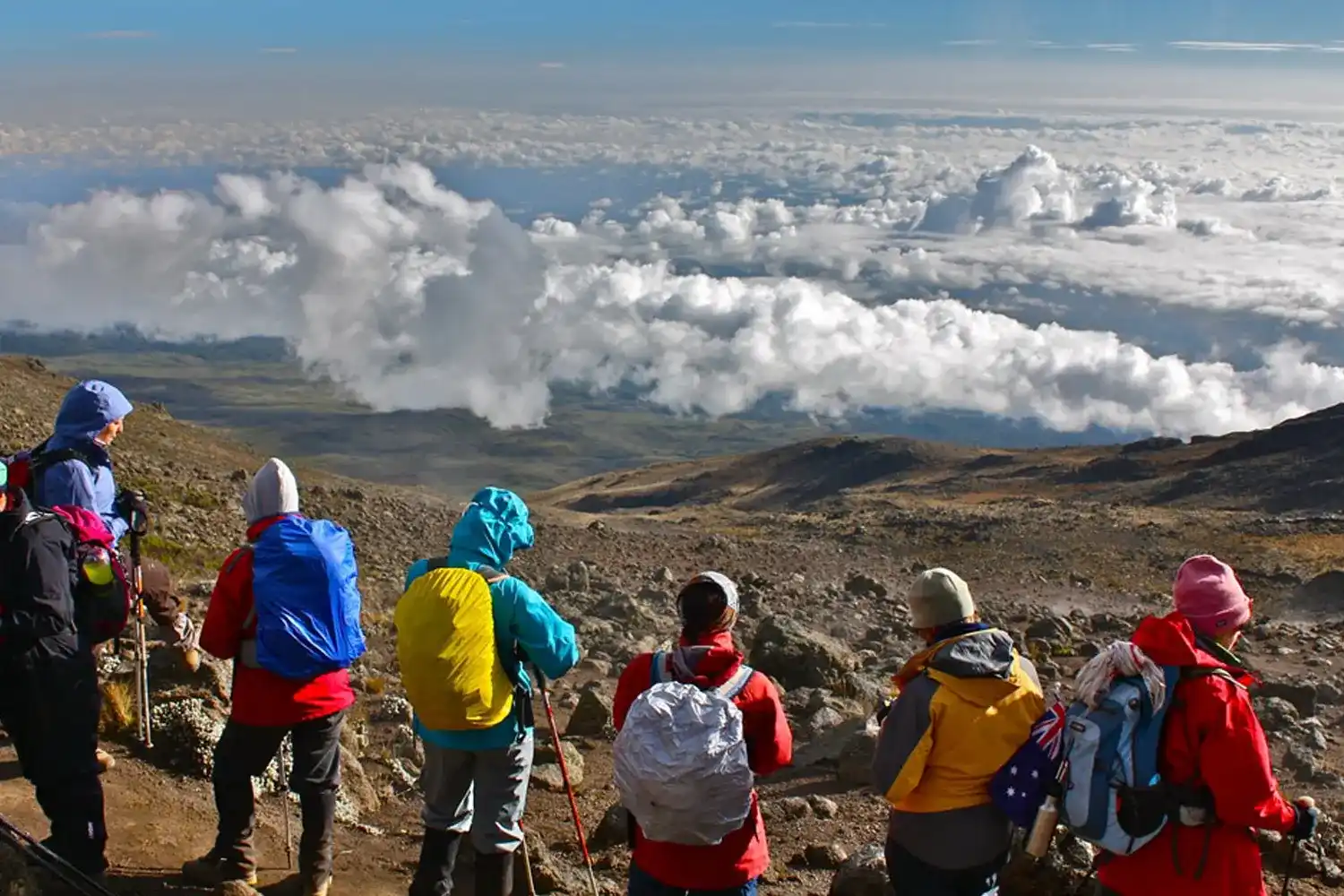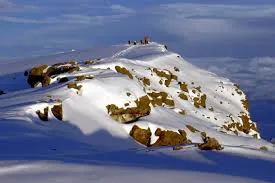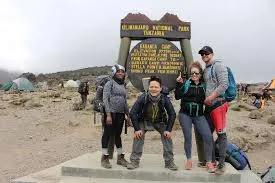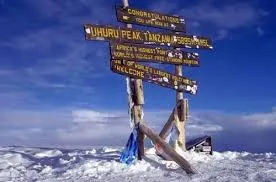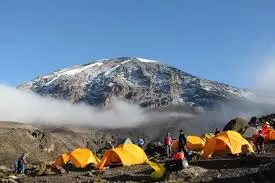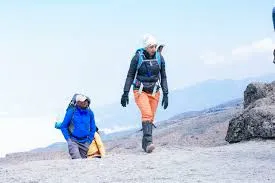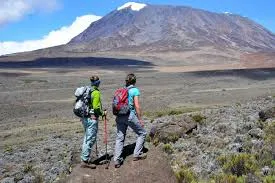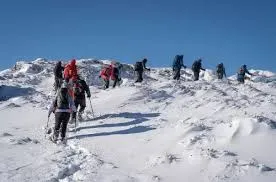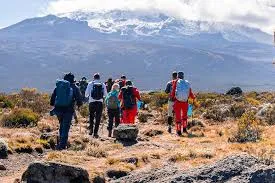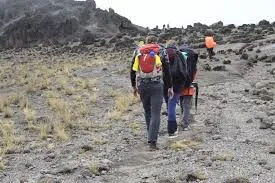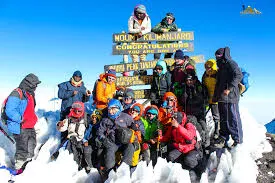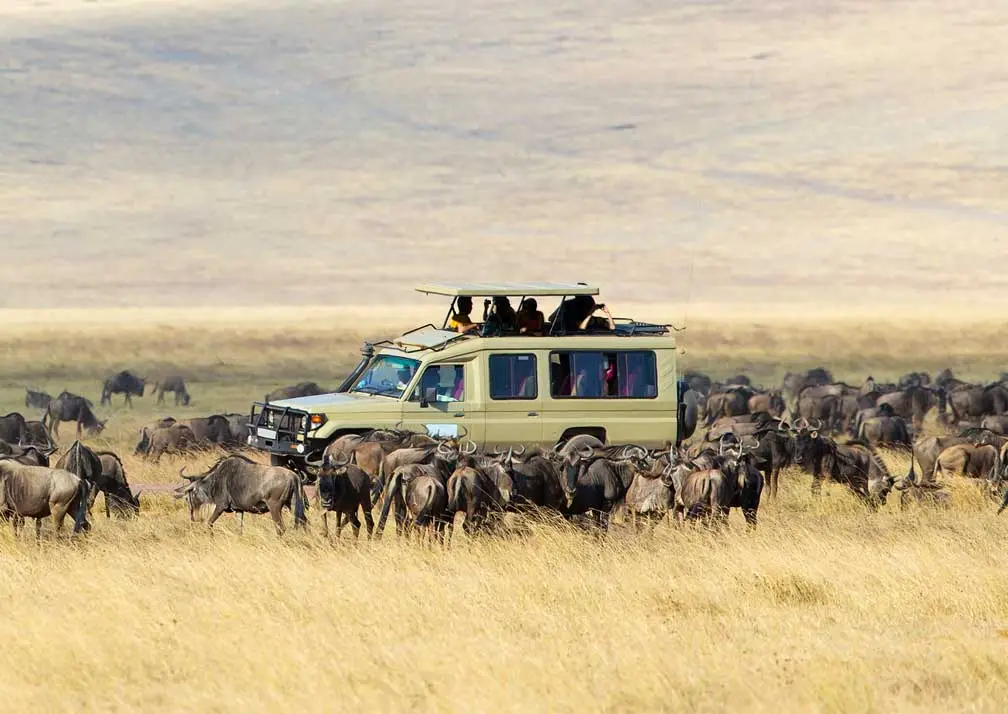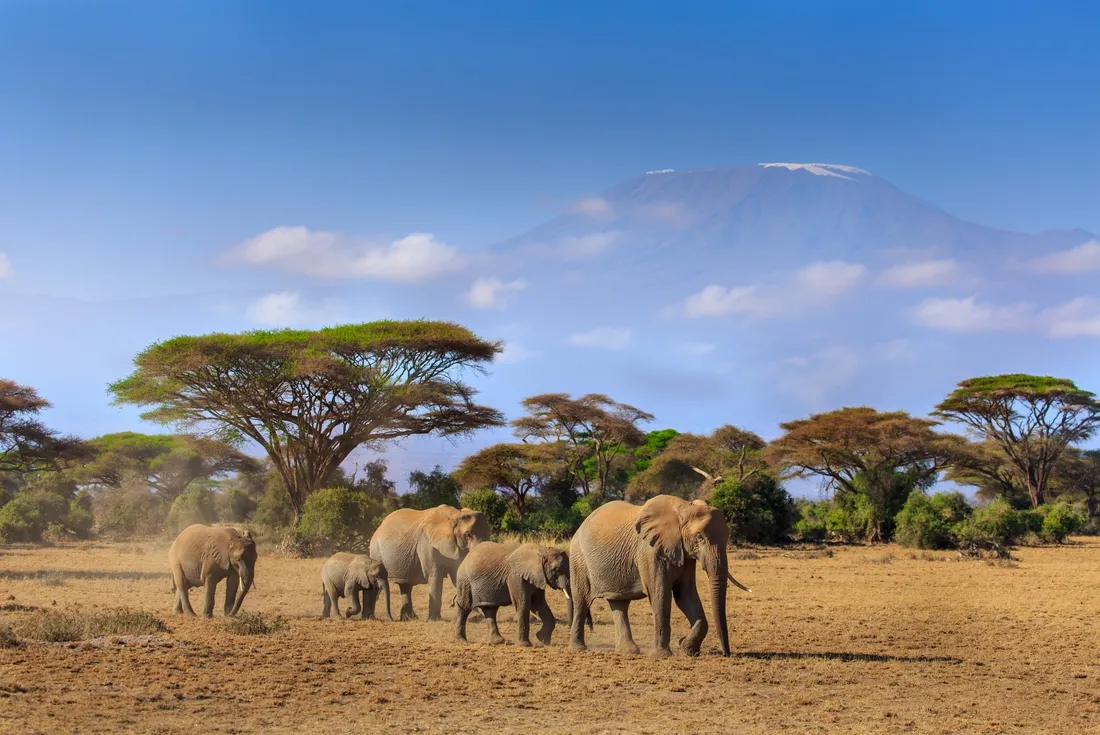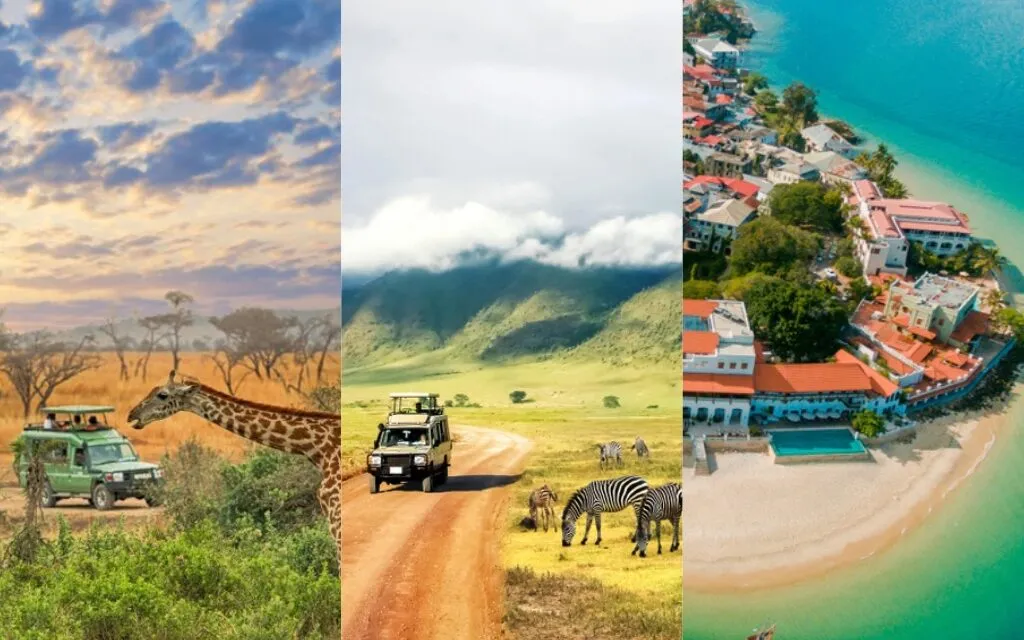Affordable Mount Kilimanjaro Climbing Packages – Budget Trekking Tours
Affordable Mount Kilimanjaro Climbing Packages offer the perfect balance between cost, comfort, and adventure. These budget-friendly options allow travelers to experience Africa’s highest peak without compromising safety or service quality. Our Affordable Mount Kilimanjaro Climbing Packages include expert guides, quality camping gear, delicious meals, and personalized support throughout your trek. Whether you choose Machame, Lemosho, or Marangu Route, each package is designed to maximize your summit success while keeping prices reasonable. Perfect for solo travelers, groups, or couples, our Affordable Mount Kilimanjaro Climbing Packages make the dream of reaching Uhuru Peak achievable for everyone.
Book Your Climb NowKilimanjaro Climbing Highlights
- Duration: 5–9 Days, Customizable
- Destinations: Mount Kilimanjaro (5,895m), Tanzania
- Main Focus: Summit Uhuru Peak, scenic routes, group climbs
- Tour Style: Guided treks, small groups (2–12 people)
- Best Time: Jan–Mar, Sep–Oct for budget-friendly climbs
- Ideal For: Adventure seekers, budget travelers, fitness enthusiasts
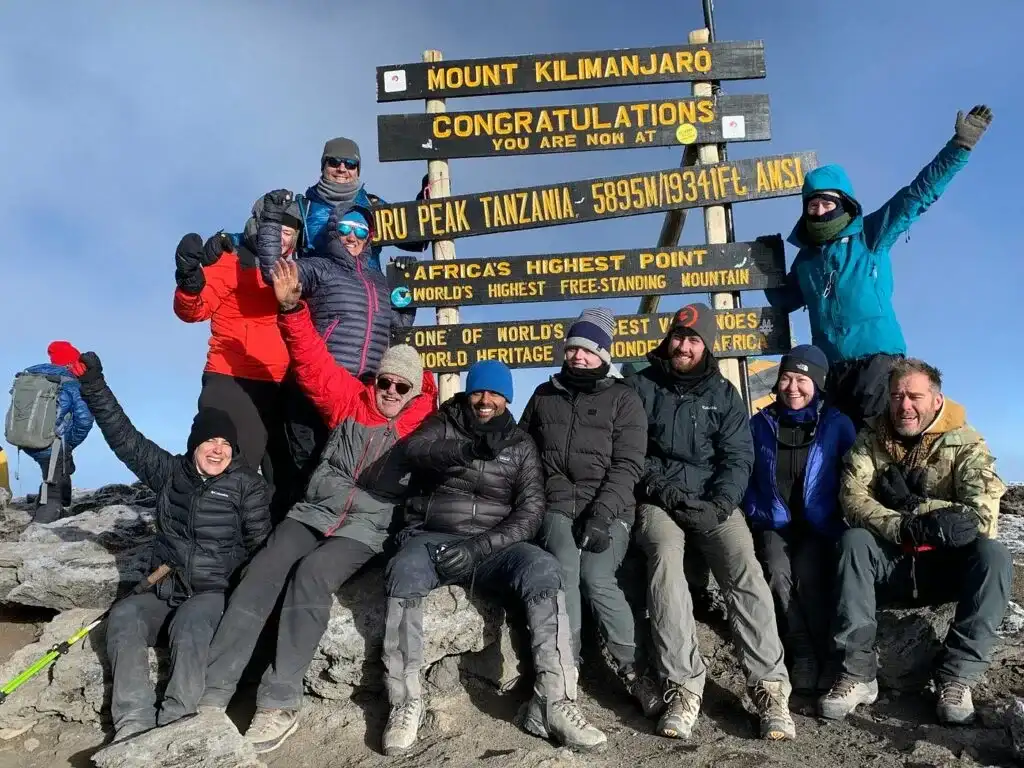
Introduction to Mount Kilimanjaro Climbing
Mount Kilimanjaro, Africa’s tallest peak at 5,895 meters, is a bucket-list destination for adventurers worldwide. Located in Tanzania, this dormant volcano offers a unique trekking experience through diverse ecosystems—from rainforests to alpine deserts and glaciers. Our affordable Mount Kilimanjaro climbing packages make this dream achievable with budget-friendly options, including Kilimanjaro group climbs and discount trekking tours. With routes like Marangu (hut-based) and Machame (scenic camping), our Kilimanjaro trekking packages cater to various fitness levels and budgets. Capable Africa Tours ensures a 95% summit success rate with experienced guides, proper acclimatization, and budget climbing offers for Kilimanjaro.
Whether you’re seeking cheap Kilimanjaro hikes or all-inclusive Kilimanjaro trekking packages, our expertly crafted itineraries deliver adventure, safety, and value. Combine your climb with a Tanzania budget safari for a complete experience!
Why Choose Affordable Kilimanjaro Climbing Packages
Climbing Mount Kilimanjaro doesn’t have to be expensive. Our budget Kilimanjaro tours offer the same thrilling experience as premium packages, with cost-saving features like group treks, shared accommodations, and off-peak discounts. Choose from Marangu, Machame, Lemosho, Rongai, or Umbwe routes, each offering unique scenery and challenges. Our affordable Kilimanjaro expeditions include experienced guides, porters, and all Kilimanjaro National Park fees, ensuring a seamless adventure. With a focus on safety and a 95% summit success rate, our Kilimanjaro climbing tours in Tanzania are perfect for budget-conscious adventurers seeking an unforgettable journey.
Opt for Kilimanjaro group tour discounts or combine your trek with a Tanzania budget safari and Kilimanjaro combo for added value. Capable Africa Tours is your trusted partner for low-cost Kilimanjaro trekking.
Kilimanjaro Climb Routes: Which is Best for Budget Trekkers?
Choosing the right route is key to an affordable Kilimanjaro climb with experienced guides. Here’s an overview of the main Kilimanjaro climb routes and their suitability for budget travelers:
- Marangu Route (5–6 Days): Known as the “Coca-Cola Route,” it’s the cheapest due to hut accommodations and shorter duration. Ideal for beginners. Cost: $1,500+.
- Machame Route (6–7 Days): A scenic camping route with group discounts, offering great value. Cost: $1,700+.
- Lemosho Route (7–8 Days): Longer for better acclimatization, budget-friendly with group treks. Cost: $1,900+.
- Rongai Route (6–7 Days): Starts from the north, less crowded, and affordable for groups. Cost: $1,800+.
- Umbwe Route (6–7 Days): Steep and challenging, best for experienced trekkers on a budget. Cost: $1,800+.
Marangu is the cheapest way to climb Kilimanjaro, while Machame and Lemosho offer the best value for scenery and success rates. Contact us to choose the best budget-friendly Kilimanjaro trek for you!
What’s Included in Our Budget Kilimanjaro Trekking Packages
Our affordable Kilimanjaro climbing packages are all-inclusive, ensuring a hassle-free experience. Here’s what’s covered and what’s not:
Inclusions
- Kilimanjaro National Park fees and permits
- Professional English-speaking guides and porters
- Full-board meals during the trek
- Accommodation (huts for Marangu, tents for others)
- Round-trip transfers from Arusha or Moshi
- Camping equipment (tents, sleeping mats)
- Emergency oxygen and first-aid kits
Exclusions
- International flights to Tanzania
- Travel or medical insurance
- Tips for guides and porters (~$15–20 pp/day)
- Personal gear (sleeping bags, trekking poles)
- Optional activities (e.g., extra acclimatization day)
- Alcoholic beverages
Best Budget Time to Climb Kilimanjaro
The best budget times to climb Kilimanjaro are January–March and September–October, when operators offer discounts due to fewer crowds. These months provide clear weather and good trekking conditions, with a 95% summit success rate on budget tours. The wet seasons (April–May, November) may offer lower prices but come with rain and slippery trails, making them less ideal. Plan your Kilimanjaro trekking deals for 2025/2026 during these shoulder seasons for the best value.
Kilimanjaro Camping vs. Hut Accommodation
Budget Kilimanjaro tours offer two accommodation types: camping and huts. Marangu route uses shared huts with basic amenities like beds and toilets, making it the cheapest option. Other routes (Machame, Lemosho, Rongai, Umbwe) involve camping in tents, which is budget-friendly for groups and offers a closer connection to nature. Our all-inclusive Kilimanjaro trekking packages provide quality tents and sleeping mats, ensuring comfort on camping routes.
How Much Does It Cost to Climb Kilimanjaro?
The Kilimanjaro climb cost varies by route, duration, and group size. Budget Kilimanjaro tours start at $1,500 per person for a 5-day Marangu trek, while longer routes like Lemosho range from $1,900. Group climbs offer significant savings, with discounts for 4+ people. Costs include park fees ($800+ per person), guides, porters, meals, and accommodation. Private treks are pricier, starting at $2,200. Contact us for the latest Kilimanjaro climbing price in Tanzania!
Budget Trekking Equipment & Packing Tips
Packing smart is crucial for a budget Kilimanjaro climb. Renting gear like sleeping bags and trekking poles in Tanzania can save money. Here’s a packing list for affordable Kilimanjaro expeditions:
- Warm Clothing: Layered clothing (base layers, fleece, down jacket) for cold summit nights.
- Sturdy Boots: Waterproof trekking boots with good grip.
- Sleeping Bag: Rated for -10°C or lower (rentable).
- Backpack: 30–40L daypack for personal items.
- Water Bottles: 2–3L capacity for hydration.
- Headlamp: With extra batteries for summit night.
- Sunscreen & Sunglasses: SPF 50+ and UV-protective glasses.
Kilimanjaro Climb Success Rate on Budget Tours
Our budget Kilimanjaro tours achieve a 95% summit success rate due to experienced guides, proper acclimatization schedules, and quality equipment. Longer routes like Lemosho and Machame offer higher success rates due to gradual ascents. Group climbs ensure motivation and support, enhancing your chances of reaching Uhuru Peak. Choose Capable Africa Tours for a safe and successful budget climb.
Kilimanjaro Private vs. Group Trekking Packages
Kilimanjaro group climbs are the most budget-friendly, with shared costs for guides, porters, and equipment. Groups of 4–12 people start at $1,500 per person. Private treks, starting at $2,200, offer flexibility and personalized pacing but are pricier. Both options include experienced guides and all park fees, ensuring a safe and memorable climb.
Best Value Kilimanjaro Trekking Operators
Capable Africa Tours stands out as one of the best value Kilimanjaro trekking operators, offering affordable packages with a focus on safety, sustainability, and local expertise. Our guides are certified, and we support local communities through fair wages for porters. With a 95% summit success rate and customizable itineraries, we’re your trusted partner for budget-friendly Kilimanjaro treks.
Kilimanjaro Climbing Gallery
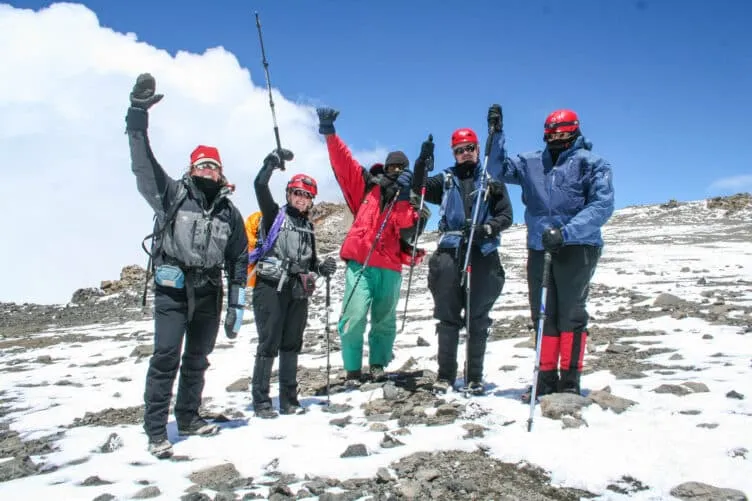
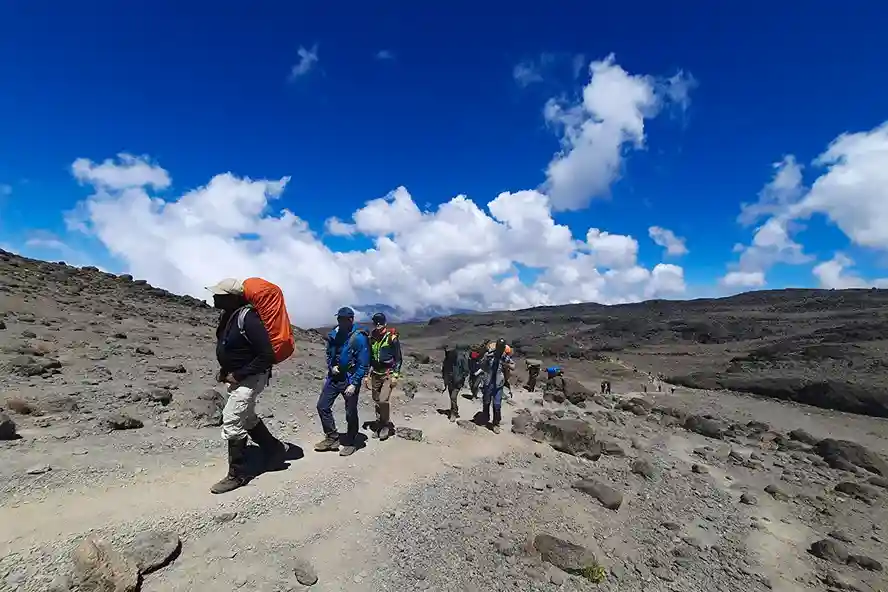
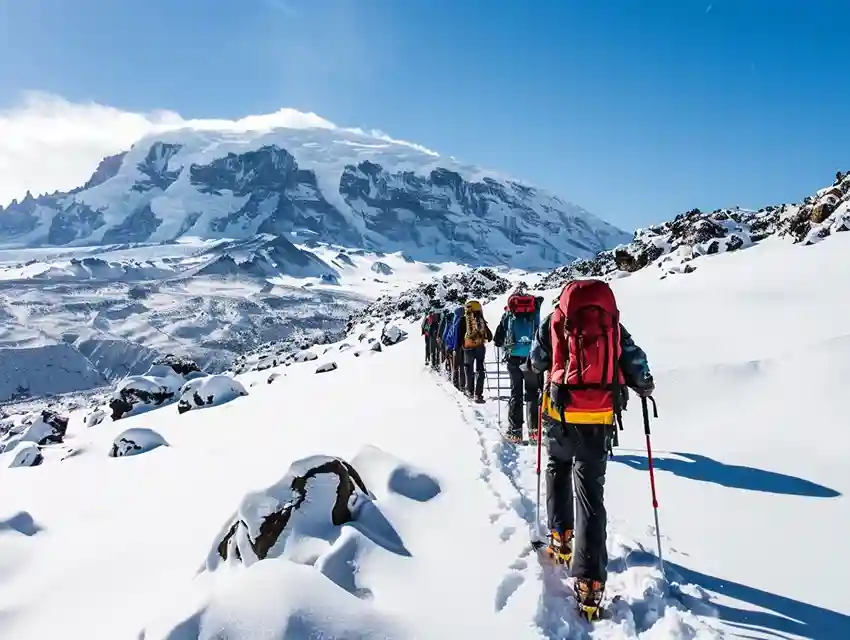
Experience Kilimanjaro’s Budget Trekking Adventure
Watch the thrill of climbing Mount Kilimanjaro on a budget, from lush rainforests to the snowy summit of Uhuru Peak.
Budget Trekking Equipment & Packing Tips
Packing wisely keeps costs low for your Kilimanjaro climb. Rent gear locally to save money, and focus on essentials for comfort and safety.
- Layered Clothing: Moisture-wicking base layers, fleece, and a waterproof jacket.
- Trekking Boots: Broken-in, waterproof boots with ankle support.
- Sleeping Bag: Rent a -10°C bag or bring your own for summit night.
- Headlamp: Essential for the pre-dawn summit push.
- Water Purification Tablets: For safe drinking water on the trail.
- Sunglasses & Sunscreen: Protect against high-altitude UV rays.
Ready to Climb Mount Kilimanjaro on a Budget?
Join Capable Africa Tours for an affordable Mount Kilimanjaro climbing package. Experience guided treks, group discounts, and a 95% summit success rate on Marangu, Machame, or Lemosho routes. Combine with a Tanzania budget safari for the ultimate adventure!
- 95% summit success rate with expert guides
- Budget-friendly group climbs starting at $1,500
- All-inclusive packages with park fees and meals
- Customizable itineraries for all fitness levels
- Supports local porters and conservation efforts
Limited spots for 2025/2026 budget treks—book now to secure your Kilimanjaro adventure!
Book This Climb Now
